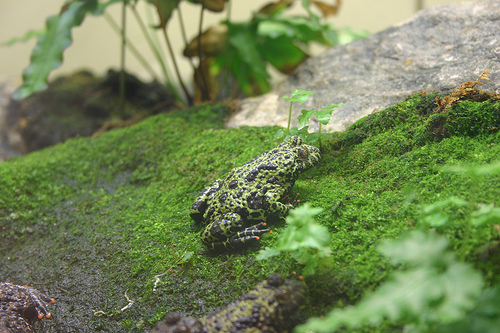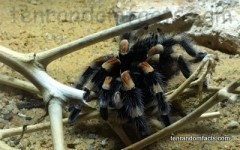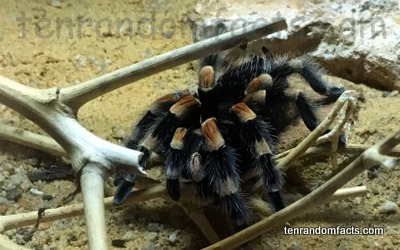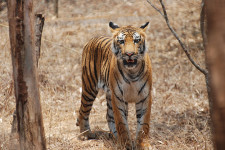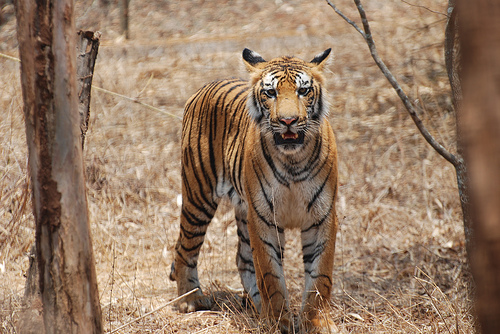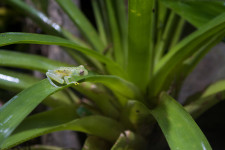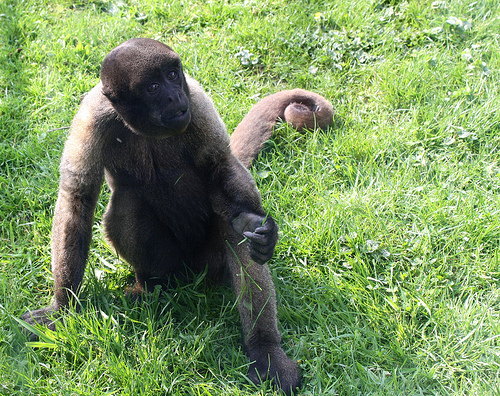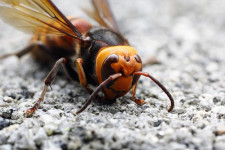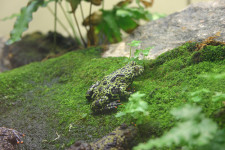
Maybe one day someone will see an oriental fire-bellied toad combust.
- Oriental fire-bellied toads are a species of frog native to Korea, southern parts of Japan, northeastern areas of China and south-eastern sections of Russia.
- The scientific name of an oriental fire-bellied toad is Bombina orientalis and it is from the family Bombinatoridae, the family of fire-bellied toads.
- Oriental fire-bellied toads grow to be 3.5 to 8 centimetres (1.4 to 3 inches) in length and weigh 28 to 56 grams (1 to 2 ounces).
- Oriental fire-bellied toads have a green to brownish-grey coloured back with wart like bumps, sometimes accompanied by black spots, that helps them to blend into their surroundings, and are a vivid red to yellow colour on the underside, spotted with black.
- The bright colour of the underside of an oriental fire-bellied toad signifies that it is poisonous and will release toxic secretions, and to scare off predators it can arch its back and display its colourful belly.
Oriental Fire-bellied Toad
Image courtesy of Ryan Somma/Flickr
- Somewhat still streams and small water pools, in a variety of forest habitats, are the haven of oriental fire-bellied toads.
- Female oriental fire-bellied toads generally lay between 40 to 250 eggs at a time, deposited in and around aquatic vegetation.
- The diet of oriental fire-bellied toads consists of worms, molluscs, algae, insects, fungi, and spiders, and they can have a lifespan up to 20 years in the wild.
- Oriental fire-bellied toads are commonly kept as pets, as they are fairly easy to care for, although caution needs to be taken when handling the toads, to avoid being irritated by their poison.
- Oriental fire-bellied toad pupils can be of a triangular shape, and its tongue cannot extend, unlike many other frog species.
Bibliography:
Szcodronski T, Bombina orientalis, 2006, Animal Diversity Web, http://animaldiversity.org/accounts/Bombina_orientalis/
Oriental Fire-bellied Toad, 2016, National Geographic, http://animals.nationalgeographic.com.au/animals/amphibians/oriental-fire-bellied-toad
Oriental Fire-bellied Toad, 2016, Wikipedia, https://en.wikipedia.org/wiki/Oriental_fire-bellied_toad
Oriental Fire-bellied Toad Fact Sheet, n.d, Smithsonian National Zoological Park, http://nationalzoo.si.edu/animals/reptilesamphibians/facts/factsheets/orientalfirebelliedtoad.cfm





